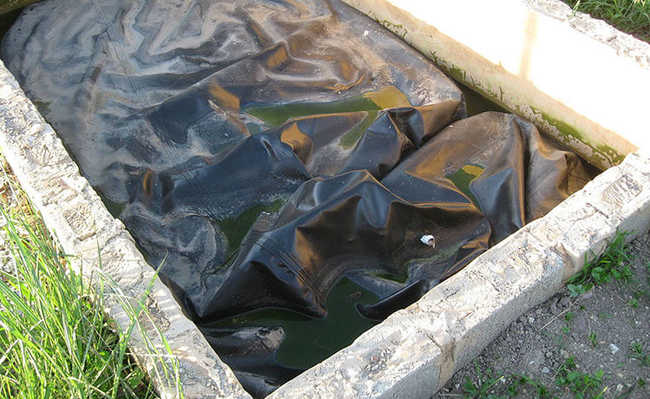What is carbon neutralization?
Carbon neutralization is one of the solutions to combat the climate emergency and can be adopted by people and companies

Carbon neutralization is an alternative that seeks to avoid the consequences of the imbalance of the greenhouse effect (caused by excess emissions of pollutants such as carbon dioxide), based on a general calculation of carbon emissions.
- Learn about air pollutants and their effects
Calculation
It is possible to survey the amount of carbon dioxide (CO2) emitted by individuals, companies, products, governments, etc. For people, there are calculators that estimate the CO2 emitted through consumption information. For more complex calculations, specialized companies can carry out a carbon emission inventory. With this information, it is possible to identify areas that emit more carbon, use more cars or have higher emissions due to production processes, but the intention is to focus on voluntary reduction measures.
- What is a carbon footprint?
- What is conscious consumption?
- What is ecological footprint?
Reduction
After evaluation, the carbon neutralization target is defined. Measures must be implemented to minimize the generation of CO2. For example: an industry can start using 100% recycled materials, reduce energy consumption, reuse water, among many other measures that can be applied, also reducing the impact on the environment.
Compensation of residual emissions

Edited and resized image by Joey Kyber is available on Unsplash
It is still impossible to have a product, service or activity that does not generate carbon, so emissions that are not avoidable can be offset. A practical example is Natura's carbon neutral program. The company reduced CO2 emissions from 4.18 kg to 2.79 kg for each kilo of manufactured product. The rest of the emissions were offset by purchasing carbon credits.
There are some mechanisms to help neutralize the carbon generated. The most common are the planting of native trees and the purchase of credits on the carbon market.
Another example is carbon neutralization in events. A specialized company calculates pollutant emissions, such as those from the use of the organization's and participants' vehicles; air travel; the energy consumed and the waste generated during the event. So, based on the amount of pollutant found by the calculation, the company supports environmental projects.
- Benefits of trees and their value
- How to produce sustainable events
Carbon neutralization works like this: Company X produces five tons of carbon in its activities, so to zero its emissions it must buy five carbon credits (one carbon credit = one ton of carbon equivalent - CO2e). Thus, a search is carried out for reliable and certified companies, such as company Y, which captures biogas from a landfill and transforms it into energy, or even company Z, which preserves native forests. These companies generate carbon credits for the use of clean energy or for avoiding deforestation. These credits are calculated by the total CO2 that is not generated. Then a partnership is created between the companies - one buys the carbon credits neutralizing its emissions and the other receives the investments.
- Carbon credits: what are they?
Techniques
There are different techniques to neutralize the emitted carbon. So-called Carbon Dioxide Removal Techniques (CDR) carbon dioxide removal) are intentional efforts to remove CO2 from the atmosphere. Among the techniques are CCS (carbon storage capture), which consists of capturing CO2 directly from the air or before it reaches the atmosphere; the increase in CO2 sequestration by the soil through reforestation and correct management of land use; the increase in carbon sequestration by the ocean (with ocean fertilization it is possible to increase the CO2 absorption capacity); the acceleration of weathering of rocks by the addition of silicate; the use of renewable energies to reduce CO2 emissions and the sequestration of CO2 from the atmosphere by vegetation.
By carrying out carbon neutralization, a company, for example, takes responsibility for CO2e emissions and neutralizes the harmful effects of its activities. There are certifications issued by organizations such as Carbon Free and Neutral carbon, but there is still no national or world certificate. Anyone can neutralize their emissions, however there is no point in adopting carbon neutralizing programs if there is no change in habits. Non-generation is fundamental and neutralization is only palliative.
- Ocean acidification: a serious problem for the planet
Environmental impacts
We generate tons of CO2 (carbon dioxide or carbon dioxide) each year due to human activities. Since the 1970s, society's demands have exceeded the planet's biocapacity to meet human needs. We need 1.5 of planet Earth a year to maintain our current lifestyle - this means we are taking more than we are offered and polluting on a scale from which nature cannot recover.
As a result of our activities, climate changes are taking place and it is already possible to feel them on the skin, as in the cases of rising temperatures, more extreme natural events and rising sea levels, among others. Scientists say the temperature should not exceed a 2°C rise by the end of the century - this is the ceiling considered safe to curb global warming. But to maintain this value, CO2 equivalent (CO2e) emissions must be reduced by between 40% and 70% by 2050 and come close to zero by 2100, according to IPCC estimates.
- Ten consequences of global warming for health
- IPCC: the organization behind climate change reporting
In this sense, carbon neutralization presents itself more as a palliative alternative than a solution to be sought. However, we cannot overlook the efforts that are already being made to neutralize the emitted carbon.
How do I know if I produce carbon emissions? Do I need to neutralize?
The carbon footprint (carbon footprint - in English) is a methodology created to measure greenhouse gas emissions - all of them, regardless of the type of gas emitted, are converted into equivalent carbon. These gases, including carbon dioxide, are emitted into the atmosphere during the life cycle of a product, process or service. Examples of activities that generate emissions are the burning of fossil fuels such as air travel and mechanized harvesting, consumption of any nature (food, clothing, entertainment), event production, the creation of pasture for cattle, deforestation, production of cement, among others. Activities that emit carbon can be carried out by people as well as by companies, NGOs and governments - that's why all these entities can carry out carbon neutralization .
If you eat a dish of rice and beans, be aware that there was a carbon footprint for that meal. If your plate contains food of animal origin, this footprint is even greater (planting, growing and transporting). Knowing the carbon emission, directly or indirectly, is very important to reduce it in order to slow down global warming, improve the planet's quality of life, reduce the ecological footprint and avoid overshoot, known as the Earth overload.
- If people in the US traded meat for beans, emissions would be drastically reduced, according to research.
Reducing superfluous consumption and opting for a more environmentally friendly posture, practicing correct disposal and composting, for example, are ways to avoid carbon emissions. As for the carbon emission that it was not possible to avoid, it is necessary to neutralize.
- Garbage separation: how to properly separate garbage
- What is compost and how to make it
How can I do carbon neutralization?
Some companies, such as Eccaplan , offer the carbon calculation and carbon offsetting service for individuals and companies. Unavoidable emissions can be offset in certified environmental projects. In this way, the same amount of CO2 emitted in companies, products, events or in each person's daily life is compensated with incentives and the use of clean technologies.
Carbon offsetting or neutralization, in addition to making environmental projects financially viable, improves people's quality of life and promotes the sustainable use of green areas. To find out how to start neutralizing the carbon emitted by you, your company or event, watch the video and fill out the form below:










